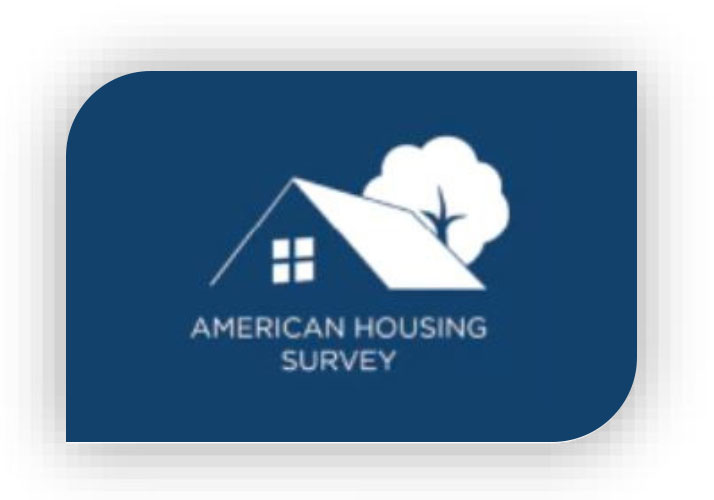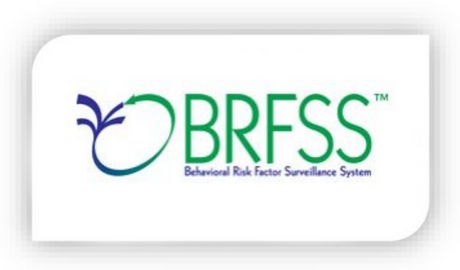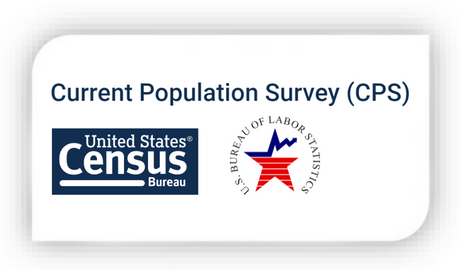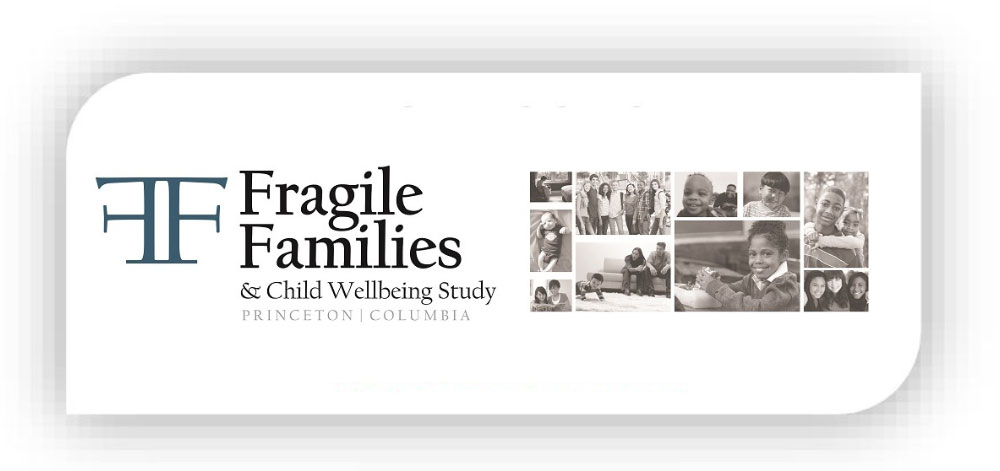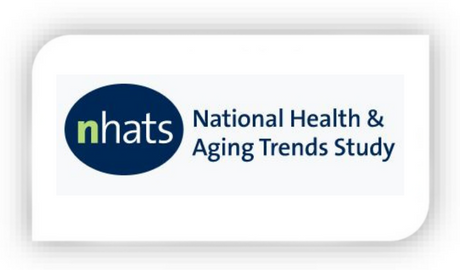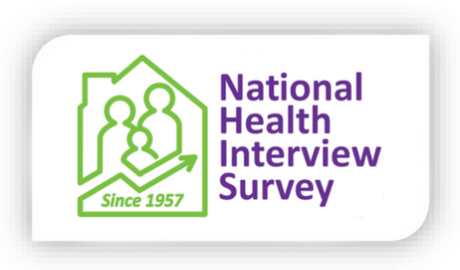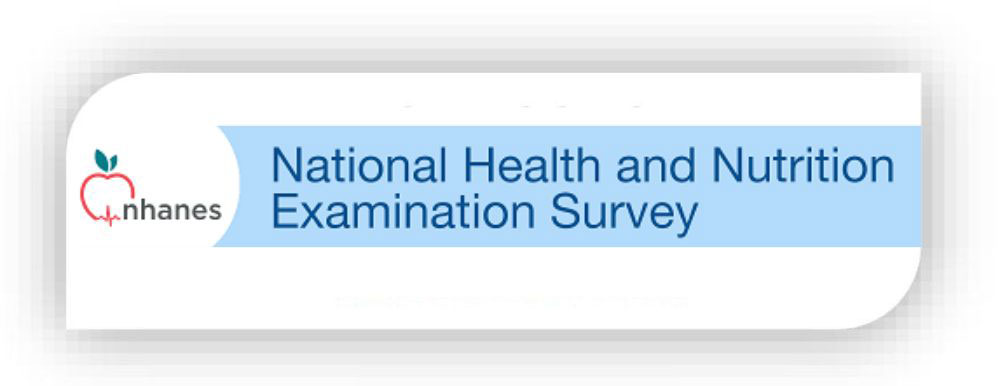Compendium of U.S. Health Data Sources on Parents with Disabilities | 2022
Download PDF | Plain-language version
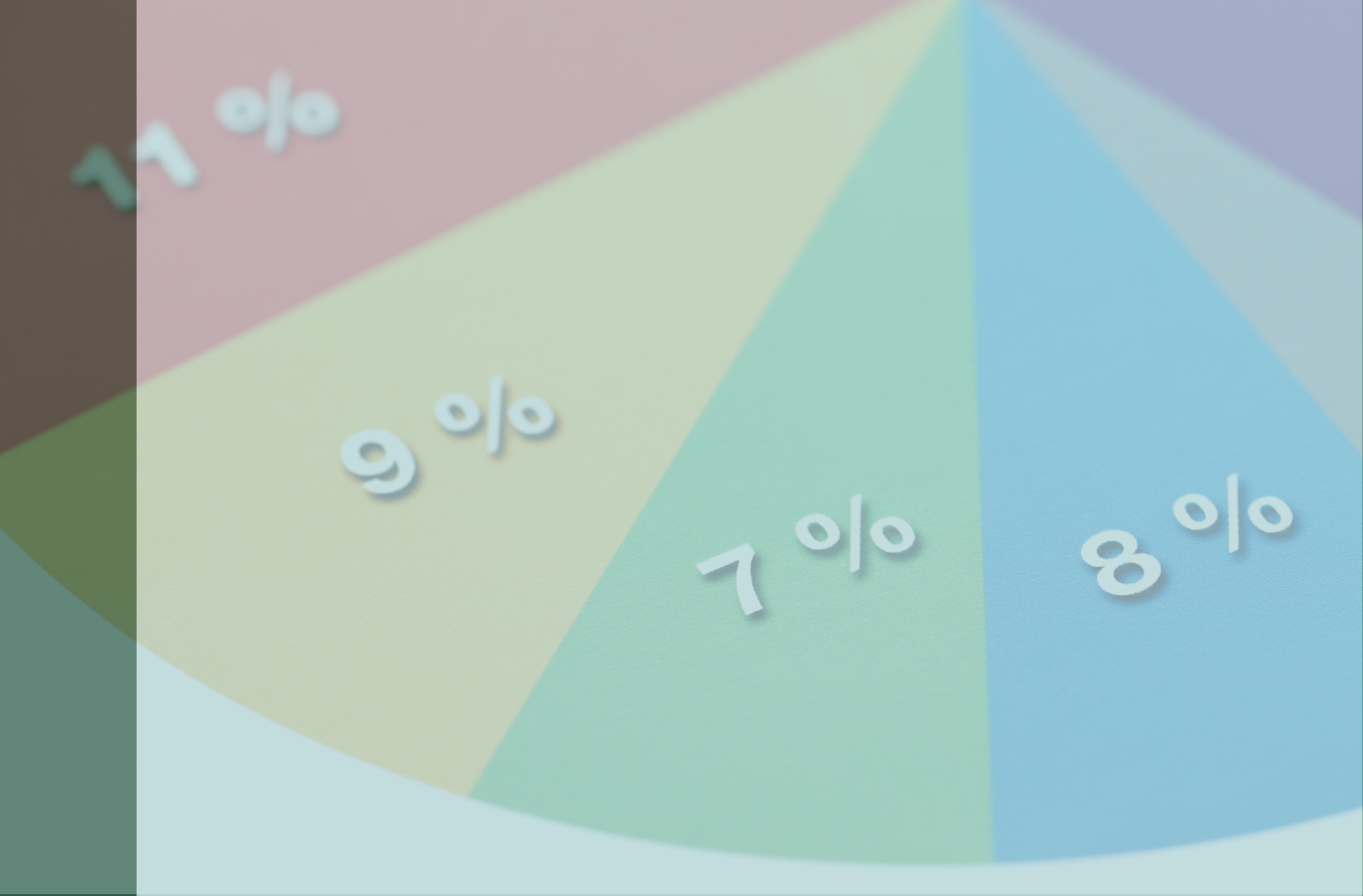 Table of Contents
Table of Contents
American Community Survey (ACS)
Behavioral Risk Factor Surveillance System (BRFSS)
Current Population Survey (CPS)
The Fragile Families and Child Wellbeing Study (FFCWS)
Health Information National Trends Survey (HINTS)
Medical Expenditure Panel Survey (MEPS)
National Comorbidity Survey (NCS)
National Core Indicators (NCI)
National Health and Aging Trends Study (NHATS)
National Health Interview Survey (NHIS)
National Health and Nutrition Examination Survey (NHANES)
National HIV Behavioral Surveillance (NHBS)
National Survey on Drug Use and Health (NSDUH)
National Survey of Family Growth (NSFG)
Survey of Income and Program Participation (SIPP)
Overview
The National Council on Disability Report, Rocking the Cradle: Ensuring the Rights of Parents with Disabilities and their Children, brought to the forefront the urgent need for data and research on the prevalence and life circumstances of parents with disabilities. Since the release of this report approximately one decade ago, researchers have made tremendous strides in addressing this need, and studies have documented a wide range of social, economic, and health disparities. Additional research is urgently needed, particularly with regard to social determinants of health, especially for parents and their families from racial and ethnic minorities. This research will ultimately inform targeted interventions to reduce and/or eliminate disparities.
To support this endeavor, in 2017 the National Research Center for Parents with Disabilities published a Compendium of Health Data Sources for Parents with Disabilities in the United States. This compendium lists national data sets that include indicators of both disability and parental status, so that researchers can investigate questions related to the prevalence and life circumstances of disabled parents. The current report is an update to this document. It includes the data sets listed in the previous compendium, as well as additional data sets that do not necessarily focus on health data (e.g., the American Housing Survey).
Each of seventeen national data sets is listed below, with a brief description of its focus. This is followed by a description of each data set’s indicators of parental and disability status (i.e., the survey questions or variables that allow researchers to determine if a respondent is disabled and/or a parent). Many of the data sets use a set of six standard disability questions; these questions are referred to throughout the document and are listed in Appendix A.
This list of data sets is based on the authors’ review of literature and web sources. The Centers for Disease Control and Prevention (CDC) published a list of population surveys that include the six standard disability questions listed above; the surveys from this list that also include parental indicators are included in this compendium. Together, the data sets described in this report demonstrate promising potential for research on parents with disabilities and their families, using national, population-based data sets.
American Community Survey (ACS)
The American Community Survey is an ongoing yearly survey administered by the United States Census Bureau. Each year, 3.5 million people are contacted to participate. Topics pertain to housing, social history, educational attainment, and occupation; economic indicators such as poverty status and health insurance coverage; and demographic information.
Website: https://www.census.gov/programs-surveys/acs/about.html
Disability indicators
The survey asks respondents if they have each of six disability types: hearing difficulty, vision difficulty, cognitive difficulty, ambulatory difficulty, self-care difficulty, and independent living difficulty. These are the standard six disability types, referred to throughout this compendium. The questions that are asked to identify these disability types are listed in Appendix A.
If a respondent has one or more of these disability types, they are considered to have a disability. These questions have been included in the ACS since 2008.
Parental status indicators
The survey asks for ages of people in the household and asks how each person is related to person one, who is defined as “the person living or staying here in whose name this house or apartment is owned, being bought, or rented.” Further, instructions specify, “[i]f there is no such person, start with the name of any adult living or staying here” (with here referring to the household).
Relationship options include:
- Opposite-sex husband/wife/spouse
- Opposite-sex unmarried partner
- Same-sex husband/wife/spouse
- Same-sex unmarried partner
- Biological son or daughter
- Adopted son or daughter
- Stepson or stepdaughter
- Brother or sister
- Father or mother
- Grandchild
- Parent-in-law
- Son-in-law or daughter-in-law
- Other relative
- Roommate or housemate
- Foster child
- Other nonrelative
American Housing Survey (AHS)
The American Housing Survey is administered by the United States Census Bureau and is sponsored by the Department of Housing and Urban Development. The most comprehensive national housing survey in the country, the AHS is a longitudinal survey that gathers information about the quality of housing in the United States. It covers topics that include the physical conditions of homes and neighborhoods, the cost of homes (including the cost of home maintenance), and the characteristics of residents. A single housing unit comprises a data point; in 2019, there were data from 117,422 housing units.
Website: https://www.census.gov/programs-surveys/ahs.html
Disability indicators
The survey (2009, 2011, 2013, 2015, and 2017 versions) asks the standard six disability questions (see Appendix A).
There are also a series of questions about accessibility for members of the household. Respondents indicate whether they or any other household member use each of several types of mobility equipment because of a long-term condition. Respondents also indicate whether they or anyone in the household has difficulty doing activities or navigating in the home due to a long-term condition.
Parental status indicators
There are a series of questions aimed at identifying the people that live in the house. Then, the type of relationship for each person to the respondent is identified through the following relationship options:
- Opposite-sex husband/wife/spouse
- Opposite-sex unmarried partner
- Same-sex husband/wife/spouse
- Same-sex unmarried partner
- Biological son or daughter
- Adopted son or daughter
- Stepson or stepdaughter
- Grandchild
- Father or mother
- Brother or sister
- Parent-in-law
- Son-in-law or daughter-in-law
- Other relative
- Foster child
- Housemate/roommate
- Roomer/boarder
- Other nonrelative
Behavioral Risk Factor Surveillance System (BRFSS)
The Behavioral Risk Factor Surveillance System collects information (via telephone survey) about health-related risk behaviors, chronic health conditions, and use of preventive services of United States residents. More than 400,000 adults are interviewed each year. It is sponsored by several agencies, including most divisions in the CDC’s National Center for Chronic Disease Prevention and Health Promotion.
Website: https://www.cdc.gov/brfss/index.html
Disability indicators
The survey (2016, 2017, and 2018 versions) asks the standard six disability questions (see Appendix A).
Parental status indicators
The survey asks how many children under the age of 18 live in the household; there are questions to identify the relationship between the respondent and one focal child. Relationship options include:
- Parent (include biologic, step, or adoptive parent)
- Grandparent
- Foster parent or guardian
- Sibling (include biologic, step, and adoptive sibling)
- Other relative
- Not related in any way
- Don’t know / not sure
- Refused
Current Population Survey (CPS)
The Current Population Survey is sponsored by the United States Census Bureau and the United States Bureau of Labor Statistics. It is the primary source of labor force statistics in the United States, covering topics that include work, earnings, and education. There are also supplements to the monthly basic CPS questions, and these supplemental pieces cover additional topics that include child support, volunteering, and health insurance coverage. Interviewers conduct personal and telephone interviews with approximately 60,000 occupied households (with one reference person per household). These individuals respond to questions monthly for four consecutive months, and then eight months later return for another four months.
Website: https://www.census.gov/programs-surveys/cps.html
Disability indicators
The survey (since 2008) asks the standard six disability questions (see Appendix A).
Parental status indicators
The survey asks about the relationship of each person in the household to the focal person. Options are as follows:
- Opposite-sex Spouse (Husband/Wife)
- Opposite-sex Unmarried Partner
- Same-sex Spouse (Husband/Wife)
- Same-sex Unmarried Partner
- Child
- Grandchild
- Parent (Mother/Father)
- Brother/Sister
- Other relative (Aunt, Cousin, Nephew, Mother-in-law, etc.)
- Foster Child
- Housemate/Roommate
- Roomer/Boarder
- Other nonrelative
There are follow-up questions to determine if “child” refers to a biological, step, or adopted child.
The Fragile Families and Child Wellbeing Study (FFCWS)
The Fragile Families and Child Wellbeing Study is a longitudinal study based on a sample of approximately 5,000 children born in large cities in the United States between 1998 and 2000. The sampling strategy resulted in a large number of low-income families, and families from racial and ethnic minorities. Data collection began shortly after birth and follow-up interviews were conducted at ages 1, 3, 5, 9, 15, and 22. Interviews and assessments with children and their caregivers address the following research questions: 1.) What are the conditions and capabilities of unmarred parents, especially fathers?; 2.) What is the nature of the relationships between unmarried parents?; 3.) How do children born into these families fare?; and 4.) How do policies and environmental conditions affect families and children?
Website: https://fragilefamilies.princeton.edu/about
Disability indicators
Disability is identified via questions that ask whether respondents receive disability income, or if they are not looking for work because of a disability. There is also a measure pertaining to cognitive disability (the PPVT-R, a measure of receptive verbal ability).
Parental status indicators
Parenting status is assumed. Interviews were conducted with mothers, fathers, and primary caregivers for each child.
Health Information National Trends Survey (HINTS)
The Health Information National Trends Survey, through the National Cancer Institute at the National Institute of Health, is a source of nationally representative data about knowledge of, attitudes toward, and use of information related to health and cancer. Data has been collected regularly since 2003 on topics that include screening, health communication, and health behavior.
Website: https://hints.cancer.gov/
Disability indicators
The 2012 and 2013 surveys include the standard six disability questions (see Appendix A).
More recent versions include the following:
Are you deaf or have serious difficulty hearing?
Has a doctor or other health professional ever told you that you had any of the following medical conditions?
- Diabetes or high blood pressure?
- High blood pressure or hypertension?
- A heart condition such as heart attack, angina, or congestive heart failure?
- Chronic lung disease, asthma, emphysema, or chronic bronchitis?
- Depression or anxiety disorder?
Over the past 2 weeks, how often have you been bothered by any of the following problems?
- Little interest or pleasure in doing things
- Feeling down, depressed, or hopeless
- Feeling nervous, anxious, or on edge
- Not being able to stop or control worrying
Parental status indicators
The survey asks how many children under the age of 18 live in the household.
Household Pulse Survey (HPS)
The Household Pulse Survey is a program by the United States Census Bureau, designed to collect data that captures household experiences during the coronavirus pandemic. Topics include demographic household characteristics, education, employment, food sufficiency, household spending, household energy expenditures and consumption, housing security, physical and mental health, COVID-19 vaccinations, rental assistance from state and local governments, sexual orientation and gender identity, and transportation.
Website: https://www.census.gov/data/experimental-data-products/household-pulse-survey.html
Disability indicators
The survey asks a series of questions related to mental health. Other disability questions include:
- Do you have difficulty seeing, even when wearing glasses?
- Do you have difficulty hearing, even when using a hearing aid?
- Do you have difficulty remembering or concentrating?
- Do you have difficulty walking or climbing stairs?
- Do you have difficulty with self-care, such as washing all over or dressing?
- Using your usual language, do you have difficulty communicating, for example understanding or being understood?
Parental status indicators
The survey identifies the number of children in the household within each of the following age ranges:
- Under age 5
- Ages 5 through 11
- Ages 12 through 17
Medical Expenditure Panel Survey (MEPS)
The Medical Expenditure Panel Survey is fielded by the Agency for Healthcare Research and Quality and is a set of surveys of families and individuals, their medical providers, and employers. It provides the most comprehensive source of data on the cost and use of healthcare and health insurance in the United States. The Household Component collects data on the U.S. civilian non-institutionalized population via household interviews. Topics in these interviews include the specific health services that individuals use, how frequently they use them, the cost of these services, and how they are paid for.
Website: https://meps.ahrq.gov/mepsweb/index.jsp
Disability indicators
The 2012, 2013, 2014, 2015, and 2016 surveys include the standard six disability questions (see Appendix A).
Parental status indicators
The household component collects demographic information about each person in the household (including age), so it is possible to ascertain if there are children in the household. Parent-child relationships are identified through a grid system.
National Comorbidity Survey (NCS)
The National Comorbidity Survey (NCS and NCS-2) is a longitudinal survey on psychiatric disorders in the United States, with data pertaining to the prevalence, risk factors, and consequences of psychiatric morbidity and comorbidity. Interviewers primarily used computer-assisted personal interview methods in respondents’ homes. The NCS-R utilized a new sample of 10,000 respondents and repeats many of the questions from earlier versions. The NCS-A consists of a sample of 10,000 adolescents and provides nationally representative data about the prevalence and correlates of mental health conditions among youth.
Website: https://www.hcp.med.harvard.edu/ncs/
Disability indicators
The NCS questions about disability included learning disabilities, mental and emotional disabilities, the duration of a given disability’s limitations, the perception of a respondent’s disability, assistive care needs, and the impact disability would have on a respondent’s ability to work.
Parental status indicators
Respondents are asked to identify the number of biological children they have and the number of other living children (including step, adopted, and other children) they helped to raise.National Core Indicators (NCI)
The National Core Indicators study is an effort by public developmental-disabilities agencies to measure and track their own performance. As such, all respondents have disabilities. The indicators are intended to measure the outcomes of services provided by the agencies to individuals and their families. Outcomes include employment, rights, service planning, community inclusion, choice, and health and safety. In 2020–2021, 19,991 adults across 26 states with intellectual and developmental disabilities participated in the in-person survey.
Website: https://www.nationalcoreindicators.org/
Disability indicators
Disability status is assumed.
Parental status indicators
In 2015–16, two questions were added to the NCI to ascertain parental status. The two questions are:
“Is this person a parent?”
“If the person has children under 18 years of age, does the child or children live with the person?”National Health and Aging Trends Study (NHATS)
Since 2011, the National Health and Aging Trends Study has conducted annual in-person interviews with a nationally representative sample of individuals aged 65 or over who are beneficiaries of Medicare. The study is designed to investigate late-life disability trends and trajectories, providing information that will reduce disability, maximize independent functioning, and enhance quality of life.
Website: https://www.nhats.org/researcher
Disability indicators
The standard six disability questions (see Appendix A) are included in the following surveys: 2012, 2013, 2014, 2015, and 2016.
Parental status indicators
The household section gathers information on those who live with the sample person. For children not living in sample person’s household, there are questions pertaining to relationship, gender, date of birth, and city and state of residence.
In the National Health and Aging Trends Study COVID-19 Questionnaire for Family Members and Friends, the survey gathers information on whether the person has any living children (including stepchildren), and also ascertains the number of children (or stepchildren) who are under age 18.
National Health Interview Survey (NHIS)
Funded by the CDC, the National Health Interview Survey is an annual cross-sectional survey about households’ health status, physical conditions, income and assets, and health insurance. It is the principal source of data on the health of the civilian non-institutionalized population of the United States.
Website: https://www.cdc.gov/nchs/nhis/about_nhis.htm
Disability indicators
The 2008, 2009, and 2010 surveys contain the standard six disability questions (see Appendix A) in the core instrument. The six questions were administered to a subset of the adult sample in the 2011, 2012, 2013, 2014, 2015, 2016, and 2017 surveys.
Parental status indicators
The survey identifies the number of children under 18 in the household (and the survey contains an indicator to identify multi-family households). There is also a variable to indicate the number of children in the sample adult’s family. The relationship between the child(ren) and the sample adult can be ascertained via a relationship grid system.
National Health and Nutrition Examination Survey (NHANES)
The National Health and Nutrition Examination Survey, through a combination of interviews and physical examinations of children and adults in the United States, is designed to measure the health and nutritional status of individuals in the United States. It is a program of the National Center for Health Statistics, within the CDC. A nationally representative sample of 5,000 individuals participate each year, and topics address a changing variety of health and nutrition measurements to meet current needs.
Website: https://www.cdc.gov/nchs/nhanes/about_nhanes.htm
Disability indicators
The 2013–2014, 2015–2016, and 2017–2018 surveys contain the standard six disability questions (see Appendix A).
The 2021–2022 NHANES survey includes a functioning section, which gathers information pertaining to functioning across a wide variety of domains (vision, hearing, walking, self-care, learning, remembering, etc.).
Parental status indicators
There are questions pertaining to the following: number of children aged 5 years or younger in the household; number of children aged 6–17 years old in the household. The survey also gathers information on the relationship between the household reference person and each of the household members.
National HIV Behavioral Surveillance (NHBS)
The National HIV Behavioral Surveillance was created in 2003 by the CDC to conduct bio-behavioral surveillance among persons from three specific groups at high risk for HIV infection: (1) gay, bisexual, and other men who have sex with men; (2) persons who inject drugs; and (3) heterosexually active persons at increased risk for HIV infection. Each year, a minimum of 500 eligible persons from one of the three groups are interviewed; the three groups participate in rotating, annual cycles.
Website: https://www.cdc.gov/hiv/statistics/systems/nhbs/about.html
Disability indicators
The 2014–2016, 2017–2019, and 2021–2022 surveys contain the standard six disability questions (see Appendix A).
Parental status indicators
The survey asks about the number of dependents who depend on the respondent’s income.
National Survey on Drug Use and Health (NSDUH)
The National Survey on Drug Use and Health interviews approximately 70,000 people each year to provide data on tobacco, alcohol, drug use, mental health, and other health-related issues in the United States. The survey is directed by the Substance Abuse and Mental Health Services Administration and is conducted by RIT International.
Website: https://nsduhweb.rti.org/respweb/homepage.cfm
Disability indicators
The 2015, 2016, 2017, and 2019 surveys contain the six disability questions (see Appendix A).
Parental status indicators
The survey asks about age, gender, and relationship to the focal person of each person who lives in the household. Instructions specify that the relationship option “child” includes biological, step, foster, and adoptive children.
National Survey of Family Growth (NSFG)
Funded by the CDC, the National Survey of Family Growth collects data via computer-assisted personal interviews in respondents’ homes, with data collection recurring throughout the year. It collects information pertaining to family life, marriage and divorce, pregnancy, infertility, use of contraception, and women’s and men’s health. Respondents are men and women between the ages 15 and 49.
Website: https://www.cdc.gov/nchs/nsfg/about_nsfg.htm
Disability indicators
The 2011–2013, 2013–2015, 2015–2017 and 2017–2019 surveys contain the standard six disability questions (see Appendix A).
Parental status indicators
Female survey:
There are questions about household members and their relationship to the focal person, with follow-up questions about whether a child is a biological child or something else.
Other questions in the female survey include:
- Are you pregnant now?
- (Including this pregnancy,) how many times have you been pregnant in your life?
- Now I’d like to ask some questions specifically about your (nth) pregnancy. (Remember, we’ll be talking about each of your pregnancies in the order they occurred.)
- In which of the ways shown on Card 13 did the pregnancy end?
- Does (BABY NAME) still live with you?
Male survey:
There are several questions about household members (including children) and their relationships to the focal person.
Other questions in the male survey include:
- To the best of your knowledge, have you ever made someone pregnant?
- To the best of your knowledge, how many times have you ever made someone pregnant?
- To the best of your knowledge, how many of these pregnancies resulted in a baby being born?
In addition to information on biological children, the 2017–2019 male questionnaire gathers information on current pregnancies and on other children (wife/partner’s children from her previous relationships).
Survey of Income and Program Participation (SIPP)
The Survey of Income and Program Participation, a program of the United States Census Bureau, is a nationally representative longitudinal survey about income, employment, household composition, and government program participation.
Website: https://www.census.gov/programs-surveys/sipp.html
Disability indicators
The 2008 and 2020 surveys contain the standard six disability questions (see Appendix A). Surveys from other years also have disability indicators (i.e., a series of questions about whether the respondent has a physical, mental, or other health condition that limits the kind or amount of work they can do). The wording of these questions varies across the survey years.
Parental status indicators
SIPP identifies parents by asking whether the respondent is someone’s child (biological, step, or adopted) or parent (mother/father/guardian), indicating a parental relationship. It also gathers information on relationships within the household. For example, “What is …’s relationship to the reference person?” and “Does … have a parent in the household? Please include biological, step and adoptive parents.”
Authors
Miriam Heyman, Monika Mitra
Acknowledgments
This data availability summary report was developed as a product of the National Research Center for Parents with Disabilities, awarded by the National Institute on Disability, Independent Living, and Rehabilitation Research (NIDILRR), grant number 90DPCP0012.
For more information about the National Research Center for Parents with Disabilities, please contact centerforparents@brandeis.edu.
Suggested Citation
Heyman, M., & Mitra, M. (2022). Compendium of Data Sources for Parents with Disabilities in the United States. Waltham, MA: Brandeis University.
References
Centers for Disease Control and Prevention. (2020). Disability data sets. Retrieved from https://www.cdc.gov/ncbddd/disabilityandhealth/datasets.html.
Li, H., Mitra M., Parish, S., Nicholson, J. (2017). Compendium of Health Data Sources for Parents with Disabilities in the United States. Waltham, MA: Brandeis University. https://heller.brandeis.edu/parents-with-disabilities/data-hub/data-compendium-2017.html
National Council on Disability. (2012). Rocking the cradle: Ensuring the rights of parents with disabilities and their children. Retrieved from https://www.ncd.gov/publications/2012/Sep272012/.
Appendix
The American Community Survey Disability Questions (ACS-6)
All ages:
- Is this person deaf or does he/she have serious difficulty hearing? (Yes/No)
- Is this person blind or does he/she have serious difficulty seeing even when wearing glasses? (Yes/No)
Ages 5 years and over:
- Because of a physical, mental, or emotional condition, does this person have serious difficulty concentrating, remembering, or making decisions? (Yes/No)
- Does this person have serious difficulty walking or climbing stairs? (Yes/No)
- Does this person have difficulty dressing or bathing? (Yes/No)
- Because of a physical, mental, or emotional condition, does this person have difficulty doing errands alone such as visiting a doctor’s office or shopping? (Yes/No)


